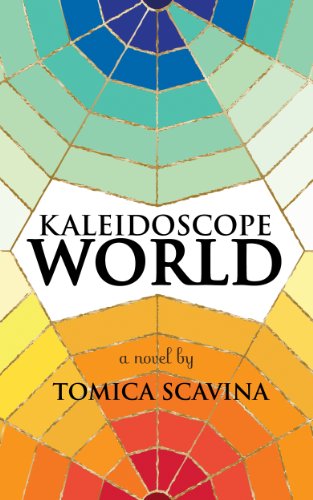How you would describe your typical working day? I write in my study room in the mornings, usually from 7 till 10. This is the only time I can write, because later on, real people’s stories drag my attention away from my fictional stories. I work as a psychotherapist and conduct a writing therapy program, which is really fulfilling, but also demanding, so whenever I can, I run over to a nearby café Laganini (which means Easily). In Laganini I often think about the plot and characters or write answers to an interview (as I am doing now) into my yellow-green notebook. In the evening, I usually watch a movie with my boyfriend or hang out with friends.
What was the hardest part about writing this book? When I wrote two thirds of the novel and realized that I had to start leading the story towards an end, I faced some kind of an emotional wall. It always happens to me at this stage of writing. I feel disconnected from the inner world of my heroine and need some time to collect myself. I know her world will become alive again in the mind of a reader, but the process of creation will end, and when I see this from my heroine’s perspective, it’s like facing the end of the world. The borders will be set, the creative movement will stop. For me, this is disturbing.
Do you recall how your interest in writing originated? I was nine years old and I wanted to share a secret with my father. I wrote it on a piece of paper and gave it to him. He didn’t really get it, but the paper did. The paper had fully accepted what I wrote – without distortion, without judgement, without advice. I think this was the seed of my love towards writing, which later evolved into writing diaries, poetry and prose.
How did you develop your plot and characters? The idea for Kaleidoscope World was “kaleidoscopic” from the very beginning. First I had the pieces: kaleidoscope as a magical object, cellist with a missing finger and a half-crazy heroine. These pictures/ideas were somehow magnetic to me, and when I put them together, they created the main idea: kaleidoscope as a tunnel to another dimension. Which dimension is real – this one or that one? I won’t explain the cellist’s role, because I don’t want to spoil the reading. What I want to point out is that the plot somehow created itself. I just had to shake up the kaleidoscope bits, and the whole picture was there. Once I had it, I dove into it and wrote Kaleidoscope World pretty smoothly in less then a year.
What five adjectives would describe your book the best? Intriguing, funny, mystical, brave and crazy.
When did you first know you could be a writer? The first idea came when I was twelve. Until then I was writing children’s poetry about mom, dad, autumn and blue sky, and then I started to write a five-page long “novel” with a waitress as a main character. I remember this feeling. A fulfilling feeling of being someplace else – in the fiction.
When I was nineteen, I started to write my first “real novel” The Age of Splicing. It had no structure or consistency in style, but had a protagonist with tangled vocal cords and a dwarf with garlic-colored hair, which was cool enough to impress my younger sister and several friends. This was so encouraging that I had to write another novel – Basvik. The title was a name of an imaginary town with a whole array of lovely, weird characters. My favorite was a fortune-teller who could see the future from the way people laughed.
At this time I was pretty sure that I was a writer, even though many years have passed before my first book had been published.

Buy Now @ Amazon
Genre – Psychological Thriller
Rating – PG
More details about the author & the book
Connect with Tomica Scavina on GoodReads & Twitter
Website http://www.tomicascavina.com/


No comments:
Post a Comment